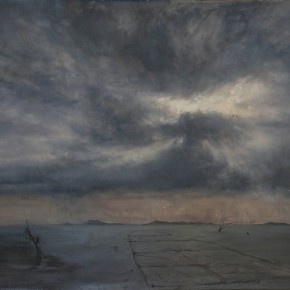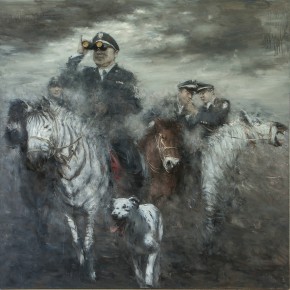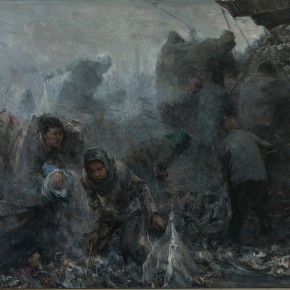
“Portrait of Phenomenon - Kong Liang’s Works Exhibition” is presented in the Permanence Gallery from January 18 to February 20, 2014, and Kong Liang works showcase the groups who live at the edge of a city and the reflection and expression of the phenomenon of the epoch.
“Portrait of Phenomenon” brings together the recent oil paintings by Kong Liang, and the value lies in allowing people to see his exploration in oil painting as well as printmaking creation. “Portrait of Phenomenon” is the portrait of a reality, the phenomenon of people’s portraits, and even the self-portrait of the artist which is implicitly displayed in the work. The exhibition is divided into two parts: firstly “The Marginal Men Series” fully showcases the related manuscripts of the creation of works by Kong Liang in addition to the original works, showing the groups living at the edge of a city and the related reflection and expression of the phenomenon of the era. Secondly, it starts with “Sojourn Crab” and ends in “All have been in the Past”, to showcase his real experiences of social realities, using a metaphor to show the “truth portraits” of various phenomenon in the community.
Looking back over history, it is the era that stresses on “show” more than ever before. People are busy rushing into the spotlights, where it appears as if there are some enchanted wonderland of social landscape. Facing illusory mirages, few people can stop running wildly forward, but Kong Liang would rather step back, becoming a sober spectator so expressing himself through painting. He plays the role of an observer of contemporary real life from this perspective. The greatest significance of the observer is not what he sees, but the perspective he is observing from. I am initially interested in the word “marginal” as an interpretation of Kong Liang’s works. People always consider the people who are different from the mainstream as the marginal ones, but it is not true. Non-mainstream is not the opposite of mainstream, while the marginal can be see the gap between the mainstream and non-mainstream, as an area which is real easy to ignore it. “The Marginal Men Series” by Kong Liang starts from the perspective of a kind of marginal. His “marginal men” focuses on the special groups that live at the edge of a city in the process of Chinese urbanization. If the skyscrapers that are hidden in the distant horizon are a mirage of the landscape of society, they are the victims that are closest to the enchanting landscape. They exhaust their lives in a garbage dump, while they pick up the garbage which used to be an integral part of the distant skyscrapers!
“Sojourn Crab” and other works reveal Kong Liang’s unique perspective that, regardless of the social landscape illusory existences, it seems that he always knows the trick: any illusionary beauty will be eventually thrown into a dump at the edge of a city. His works imply that: when the phones become the subject of people, or sojourn becomes the normality in urban life, each of us will become a marginal man.
- Preface of the Exhibition by Mei Zi
“Rich real landscapes of Chinese contemporary society provide a steady stream of inspiration and materials for artistic creation, while the creators must alert the dissemination by the landscape of society, trying to avoid being blurred by the vortex of reality, but to keep their spiritual interface and reflective vision they must transcend reality. Therefore, artists have to dissociate from the inner self, to discard the inherent taboos, remotely reviewing things all around, in order to seize the essence of many phenomena in contemporary society, so they can vividly express the “truth” behind the phenomenon.
For a long time, I have been keen to explore the “metaphor” in the works, decomposing the direct feelings and combining them again in the screens, thus it naturally adds various levels of meaning, which make me excited. Both questioning humanity, and reflecting society, this doesn’t seem to make me harsh.
- By Kong Liang
Translated by Chen Peihua and edited by Sue/CAFA ART INFO





































